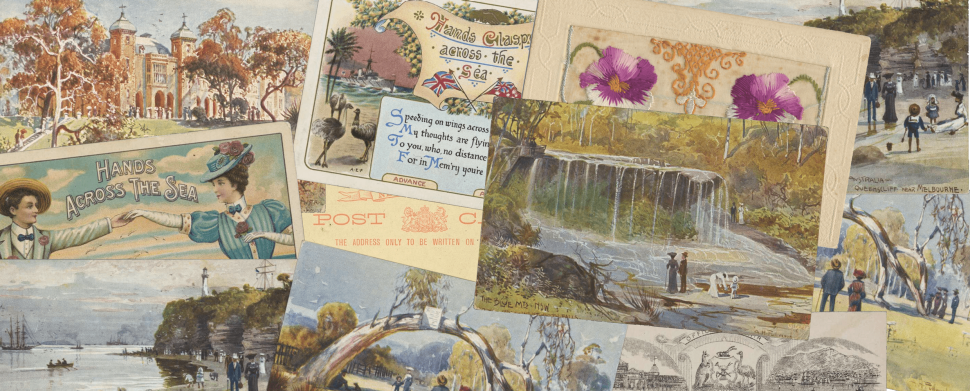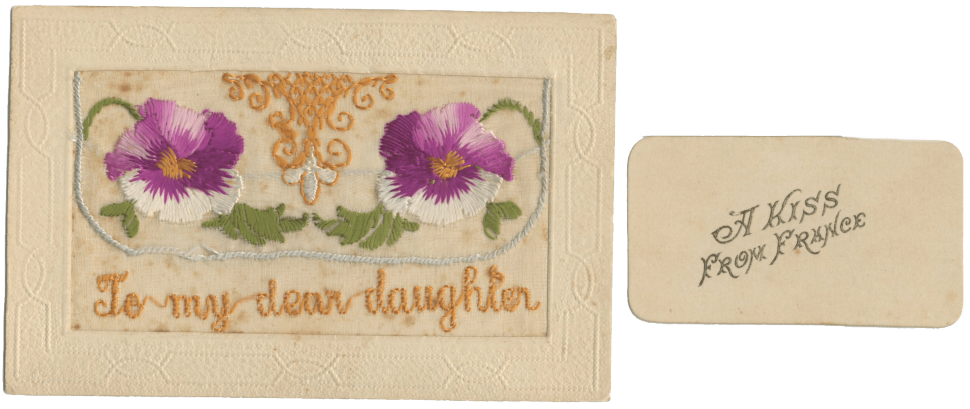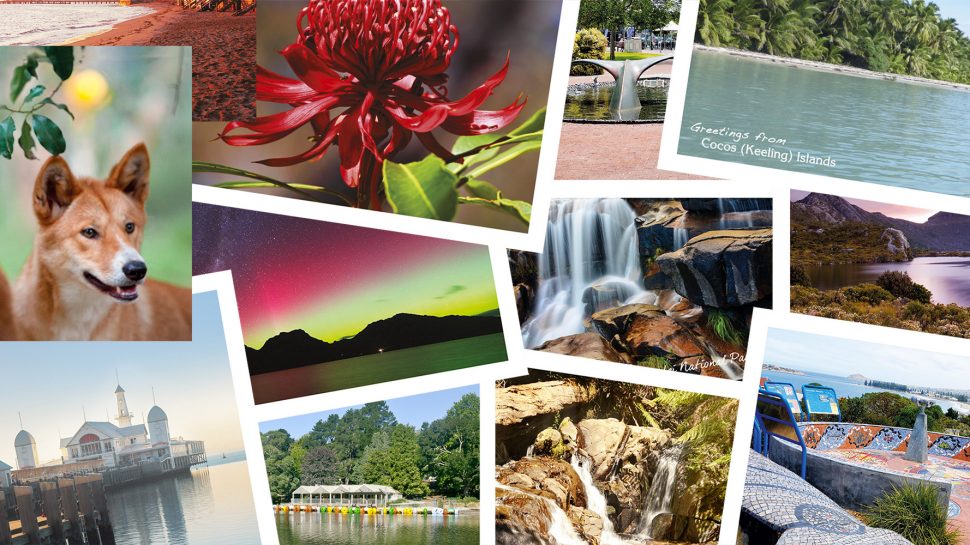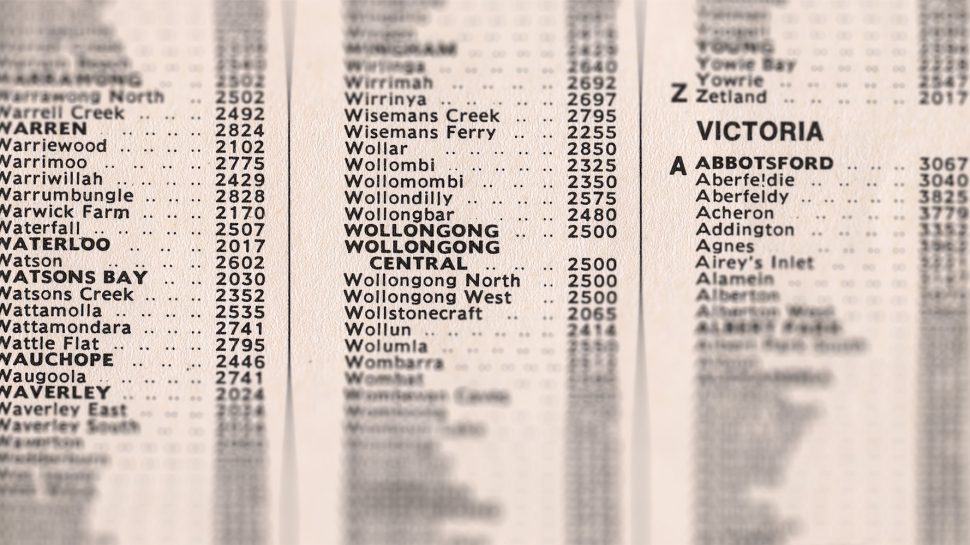The world’s first postcard is recognised as being issued 150 years ago, by Austria in 1869. This was a simple, blank, light-brown card (8.5cm x 12cm), with an area for a message, the address and an officially imprinted stamp on the other side, which was half the cost of a normal letter.
An economics professor from Vienna had written an article in the newspaper suggesting that there must be a simpler, cheaper and more practical way to send a short message than a letter, and the Austrian postal authority answered his call.
Other postal administrations followed, including the United Kingdom (1870) and United States (1873). The first Australian postcard was issued by New South Wales (1875), followed by Victoria (1876), South Australia (1877), Western Australia (1879), Queensland (1880) and Tasmania (1882).
Early postcards were Post Office monopolies; private postcard makers submitted unstamped cards for the stamp image to be printed. It was not until 1895 in Australia that private makers could sell unstamped (pictorial) postcards on which the adhesive stamp could be affixed. In 1895, the Victorian Government gave permission for the use of privately printed postcards, with strict conditions: “ … they must be made of ordinary cardboard not thicker than the material used for the official postcard, and measure not less than l inch x 3 inch nor more than 5 ¼ x 3 ¼ inches, and that there be nothing affixed, written, or otherwise impressed on the front thereof except the address and stamps in payment of postage. On the reverse side any communication may be written or printed but nothing whatever can be attached except adhesive stamps in payment of stamp duty”.
Australia’s first picture postcard was most likely in 1894, when Tasmania produced one for its International Exhibition of that year.
In November 1898, the New South Wales Post Office introduced pictorial postcards featuring attractive scenes of buildings, rivers, waterfalls, etc., printed on the message (reverse) side together with headings, “With Christmas Greetings”, “With New Year Greetings” and “Greetings From”. The printing filled most of the card area, leaving enough space for short written messages. At the time, post office regulations specified the address only could be written on the front. The postcards featured imprinted one penny (1d) or one and a half pence (1½d) New South Wales stamps. Postcard postage throughout Australia cost 1d and to overseas destinations, 1½d.
Between 1900 and 1920, picture postcards in Australia became an incredibly popular phenomenon. People could cheaply and easily send messages, without the formality of a letter, and they provided a cheap form of souvenir. Eventually, every event of significance was commemorated in some way with a postcard, and this led to the development of a ‘picture on one side and a message/stamp on the other’ postcard we are familiar with today. They were also a popular form of advertising.
Most of the postcards Australians sent each other were manufactured overseas (such as the “Grüss Aus” (“Greetings From”) postcards from Germany and the Raphael Tuck postcards from Britain). There were prominent Australian firms such as Kerry and Co., Rose Stereograph Co. and W H Beattie, however the quality was often an issue. The postcard boom was relatively short-lived, due in part to the introduction of a one-penny charge for sending letters, in 1911, the same level as postcard postage. The commencement of World War I (WWI), in 1914, did boost sales a little, due to a sense of patriotism and the desire to communicate with loved ones, and the practice of sending postcards home to Australia increased significantly. The boom has led to large collections of postcards in museums and libraries around Australia.
Postcards are still purchased and sent around the world, especially by tourists and by Post Crossing enthusiasts, and there is of course a collector market – in fact collecting picture postcards in Australia began during the postcard boom. The designs of vintage postcards cards not only provide an insight into the culture and lifestyle of bygone eras but their messages also provide insights into the lives of Australians.
As with stamps, those who collect vintage postcards often do so by theme.
Nostalgic greetings
Sentimental and patriot postcards were a popular theme in early postcard production. The distance of Australia from Britain, in particular, led to a series of “Hands Clasped across the Sea” postcards, which were highly sentimental greetings, as well as various versions on the same theme. This type of card was also prevalent during WWI, when people were also parted from loved ones.
Australian scenes
While many postcards were cheaply produced using poor to average photography, many artists were commissioned to produce postcard series. A H Fullwood (1863–1930) was one such artist. His art was used in 17 sets of cards depicting the Australian landscape, for the popular English postcard firm Raphael and Tuck and Sons; the cards were called “Oilettes”.
Born in England, Fullwood left for Australia at age 18 and became an illustrator and lithographer for various newspapers. He was a capable and respected artist, and painted with many members of the Heidelberg School, such as Arthur Streeton. He worked overseas and then returned to Australia in 1920. Interestingly, the Australian series of postcards were painted while he was in England, based on sketches he made in Australia, which may be one many are said to contain inaccuracies. They date from 1905 to around 1910, the lightwater mark of postcard collecting.

Sport and humour
Sport is a popular theme for postcard collectors, including football and cricket scenes by W. R. Hamilton, and individual player cards. Often sport was combined with humour, another popular thematic.
Silk postcards from WWI
Australian soldiers in Europe during WWI regularly sent news to concerned family members back home via postcard. Colourful embroidered silk postcards reached the peak of their popularity during this period, particularly to use as greeting cards for birthdays, Christmas and Easter. It was estimated 10 million silk postcards were produced in Europe between 1915 and 1919.
The Silk Postcard Collection, housed in the Australian War Memorial, contains more than 900 woven and embroidered silk postcards from WWI (and a collection from WWII). Produced mainly in France, these sentimental greetings were sent by home by soldiers, including to Australia. The postcards peaked in popularity during World War I, which resulted in a thriving small-scale embroidery industry in France during this time. An estimated 10,000,000 hand-made cards were produced between 1915 and 1919, with remembrance a key theme. Pretty pastel-coloured flowers featured prominently – a stark contrast to the harsh conditions faced on the Western Front, as did butterflies, birthday or sentimental greetings and the flags of allied countries.
To learn more about the history of postcards globally, visit Postcrossing's 150 Years of the Postcard website.
View our range of Australia Post postcards
This content was produced at the time of publication and will not be updated.









